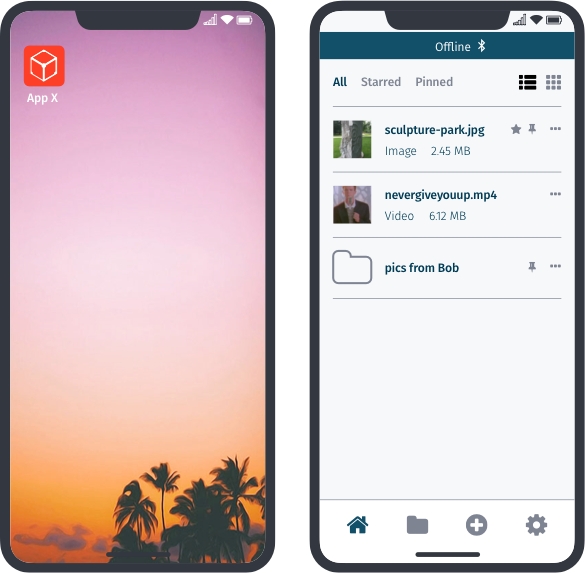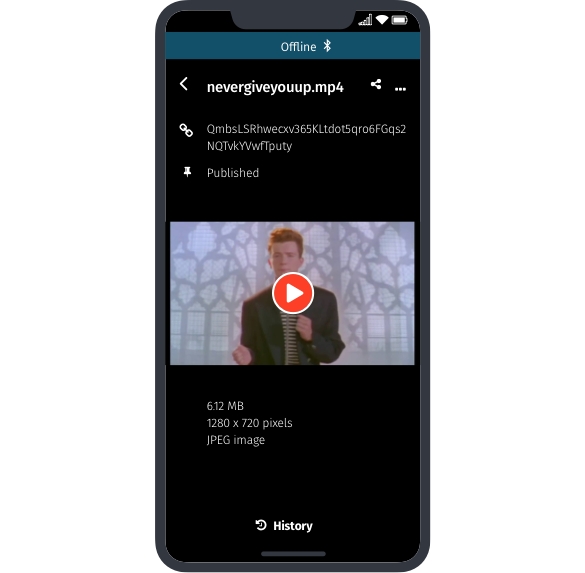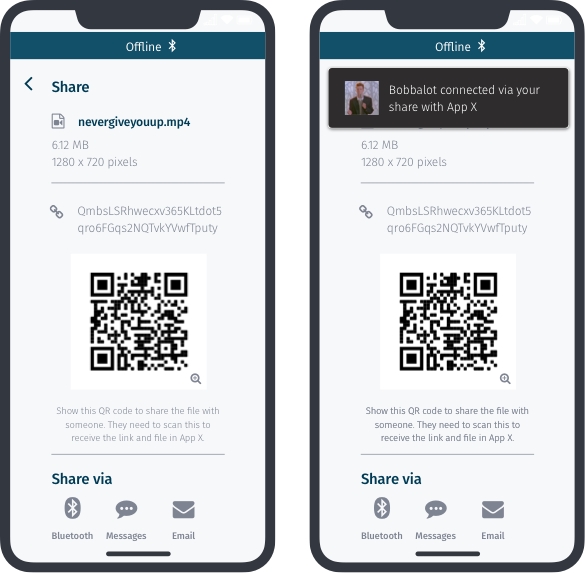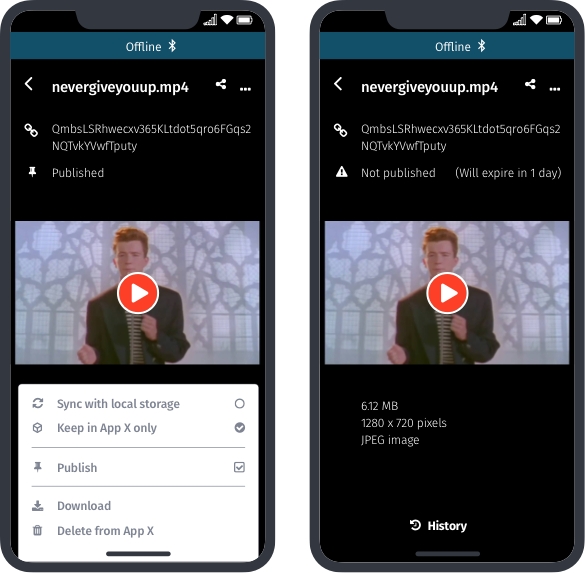User plays a shared media file without wifi or mobile network
Unlike cloud services like Dropbox and Google Drive, IPFS doesn't need centralised Internet access to transfer files. The files can be transferred direct device to device. This is because they don't need to first go through the Internet to a central server.
What we found out in research
QR codes are a quick and easy way of sharing data and files
The user should be aware of where the files are
Design considerations
Display relevant file information such as name, file size and type
Present the user their network status if it affects their abilities with the app
Show many methods of sharing, including by QR code, together in the same place
Don't assume the user knows what to do with a QR code
If allowing the user to publish or un-publish, notify them of the conditions, such as it expiring after a certain time
Who is the user and what are their needs
A person who commutes long distances to and from work who often loses signal (4G, LTE, etc.) when on the train. They're interested in being able to have everything work if connected or not by default.
Putting it into practice
Another App X user shared a file while not connected to wifi or mobile data
The user opens App X to see a video file another App X user shared before.
There is no wifi or data connection available. Because they were both using an app built on IPFS, the other App X user was able to send them the video over Bluetooth.

Design consideration
Present the user their network status if it affects their abilities with the app
The user previews the media file
The user can view all files they've had access to. They choose to watch the shared video they have a complete and always available copy of.

Design consideration
Display relevant file information such as name, file size and type
The user shares the video with another App X user
The user wants to re-share the video to another App X user. Since they are sitting right next to one another he decides the quickest way to share it is to show the QR code. The friend then scans the the code which opens the link and the video for them in App X.
The user's app then notifies them that their friend accessed the video.

Design consideration
Show many methods of sharing, including by QR code, together in the same place
Unpublishing the video
After they've shared the video, the user decides they don't want to continue publishing the file. The video was set to Publish by default in their settings. They deselect Publish in the options bottom sheet menu.
The screen displays information that their copy of the video will then expire. The user choses in their settings how long it takes for un-published files to expire and disappear from their App X. In this case one day.
Other people with a copy of the video need to continue publishing the video for others to be able to access it.

Design consideration
If allowing the user to publish or un-publish, notify them of the conditions, such as it expiring after a certain time
Last updated
Was this helpful?